Ocean-going vessels with no-one on board – a vision of the future that’s coming faster you think.
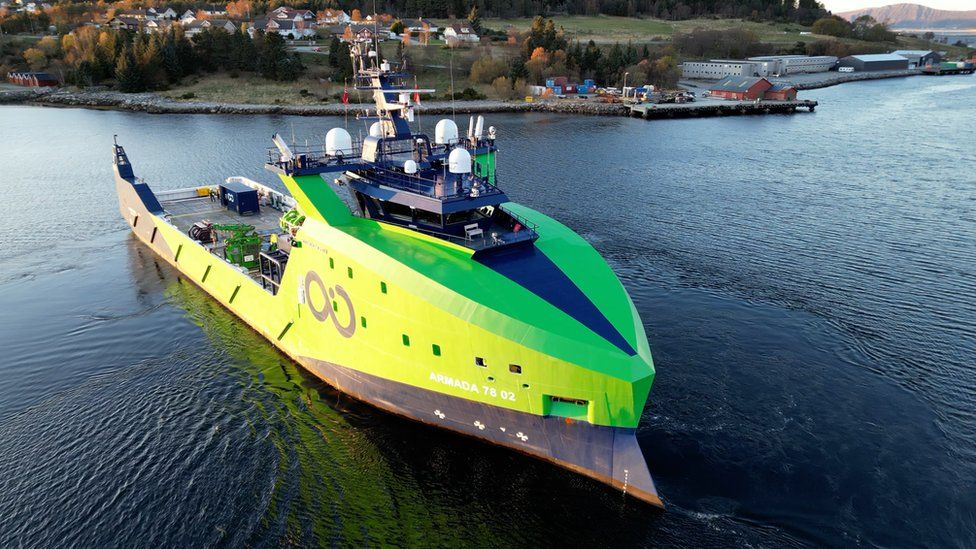 Image source, BBC/Kevin Church
Image source, BBC/Kevin ChurchIt sounds like science fiction. Ocean-going ships with no-one on board. But this vision of the future is coming – and sooner than you might think.
You can glimpse it in a Norwegian fjord where a huge, lime-green vessel is being put through its paces. At first glance, it seems like any other ship. Look closer, though, and you suddenly see all the hi-tech kit. Cameras, microphones, radars, GPS and all manner of satellite communications.
“We’ve added a lot of additional equipment and designed her especially to be what we call ‘robotic’,” says Colin Field, the head of remote systems at US-UK company Ocean Infinity (OI).
The ship is part of OI’s new “Armada” – a fleet eventually of 23 vessels – that will survey the seabed for offshore wind farm operators and check underwater infrastructure for the oil and gas industry.
Strikingly for a ship that’s 78m (255ft) in length there are only 16 people on board. A traditional ship carrying out the same kind of work would need a crew of 40 or 50. OI believes it can reduce the numbers still further.
That’s because many of the roles can be done hundreds of miles away on land.
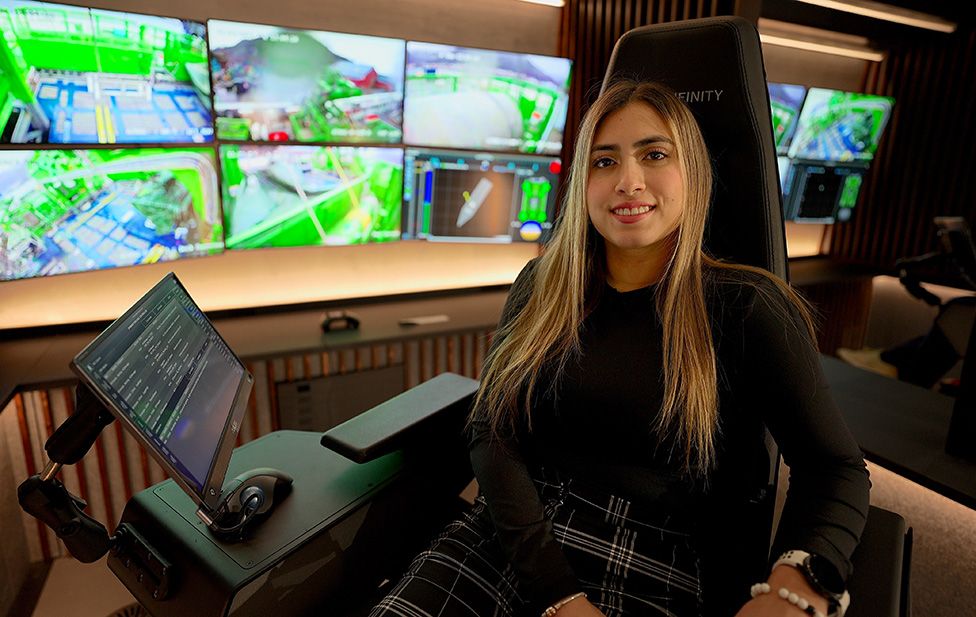
Image source, BBC/Kevin Church
Entering the company’s remote operations centre in Southampton is like walking on to a futuristic film set. The dimly lit room is vast, and it’s filled with 20 “bridge stations”, each fitted with gaming-like controls and touch screens.
Operators sitting in their high-backed chairs watch a bank of monitors displaying a live stream coming from the ship’s cameras and a multitude of sensors.
A key test for this new way of working is commanding an underwater robot – or remotely operated vehicle (ROV) – to descend from the deck to scan the seafloor.
“It’s amazing how everything is automated,” says ROV trainee pilot Marian Meza Chavira. “In some ways it’s easier here than offshore because you have so many more cameras for context.”
Autonomy, robotics and remote operation, along with artificial intelligence, will transform all transport sectors. Maritime will be no different and experiments are under way around the globe.
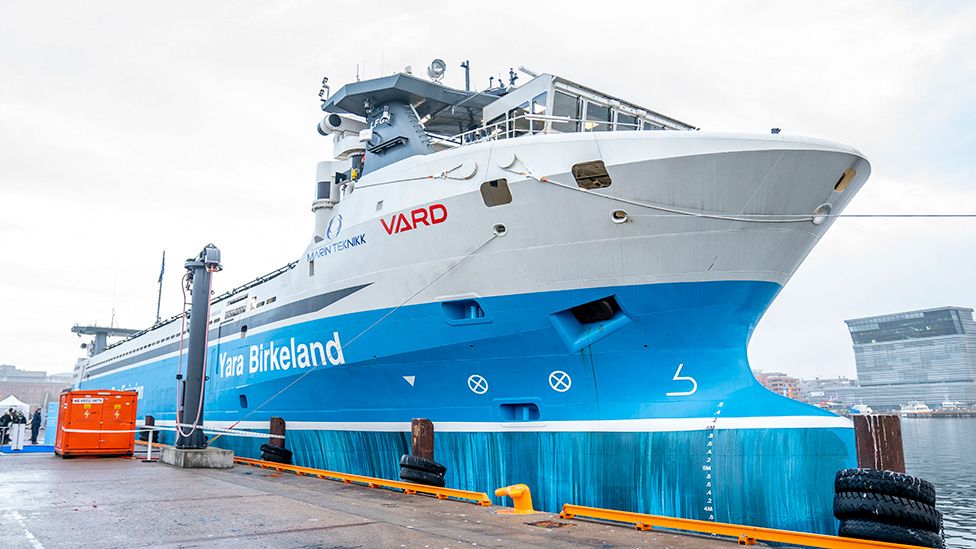
Image source, Getty Images
In Norway, for example, there’s an 80m (262ft) electric container ship running back and forth between a fertiliser plant and a local port. In Belgium and Japan there are ferries autonomously navigating between destinations, berthing and unberthing at each location. And in China, too, big autonomous container ships shuttle between coastal cities.
The advantages are obvious. With fewer people on board, ships can be smaller, which means they require less fuel and have a much reduced carbon footprint.
Rudy Negenborn researches autonomous shipping at Delft University of Technology. He says the hi-tech systems needed to fully replace crew are developing at speed but still have some way to go.
“We’ve had autopilots that let ships follow a path by themselves. That’s not so challenging. The challenges come when interacting with other traffic or a port, or when there are unforeseen situations or bad weather circumstances,” he told BBC News.
“But in the end, this is going to lead to safer, more efficient and more sustainable transport over water. I’m sure about that.”

Image source, Getty Images

This video can not be played
To play this video you need to enable JavaScript in your browser.
Robot ships: The technology that’s going to revolutionise ocean transport

Some smaller vessels are already allowed to work with no-one onboard at all.
The British company Sea-Kit International is designing and building a fleet of these crewless boats.
One was recently sent to Tonga to map the still-active underwater volcano that blew up spectacularly in 2022, a task considered too dangerous to involve people.
We followed a 12m-long (39ft) boat, fresh from the factory, as it sailed out of Plymouth harbour to inspect a WWII wreck. The bright-red vessel called Vaquita was built for the Dutch survey company Fugro.
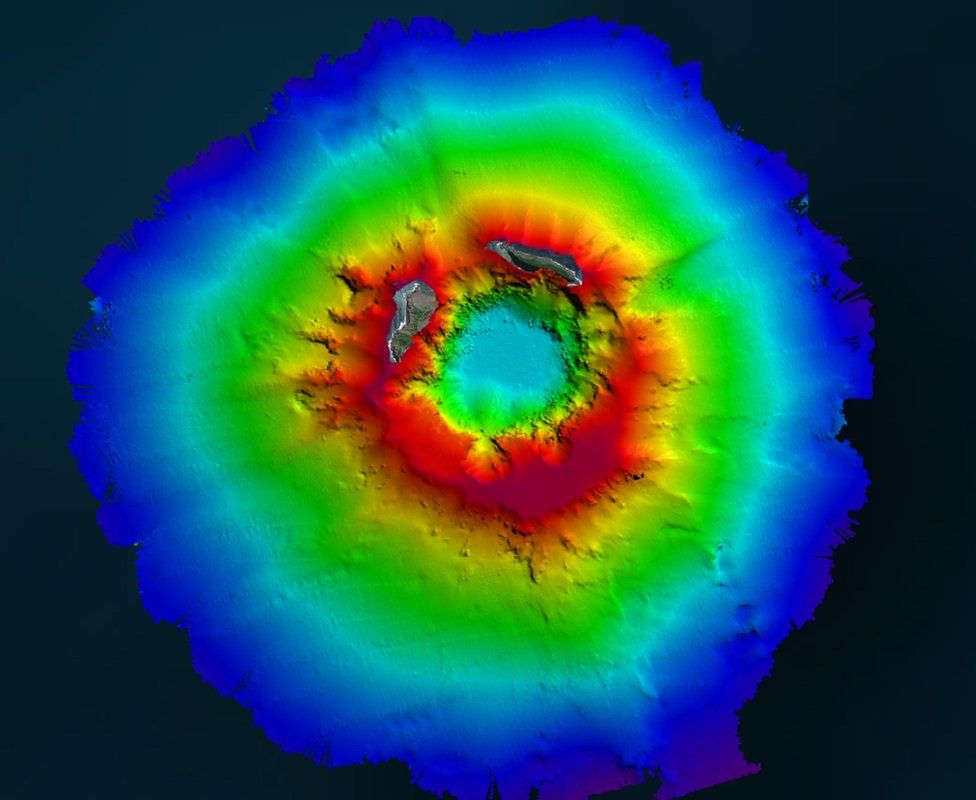
Image source, SEA-KIT/NIWA-Nippon Foundation/TESMaP
It cuts a lonely figure as it skims across the waves. It’s being fully controlled by a crew 475 miles away in an office in Aberdeen.
Fugro captain Dmitrij Dadycin’s commands, bounced via satellite, turn Vaquita nimbly one way and then the other. An ROV is deployed to go down to explore the sunken destroyer. All the while, cameras at the surface give a 360-degree view of the surrounding waters.
“There’s more pleasure to work this way,” says Dmitrij, who spent many years at sea.
“I definitely don’t miss the pitching and rolling. And at the end of your shift, you get to go home.”
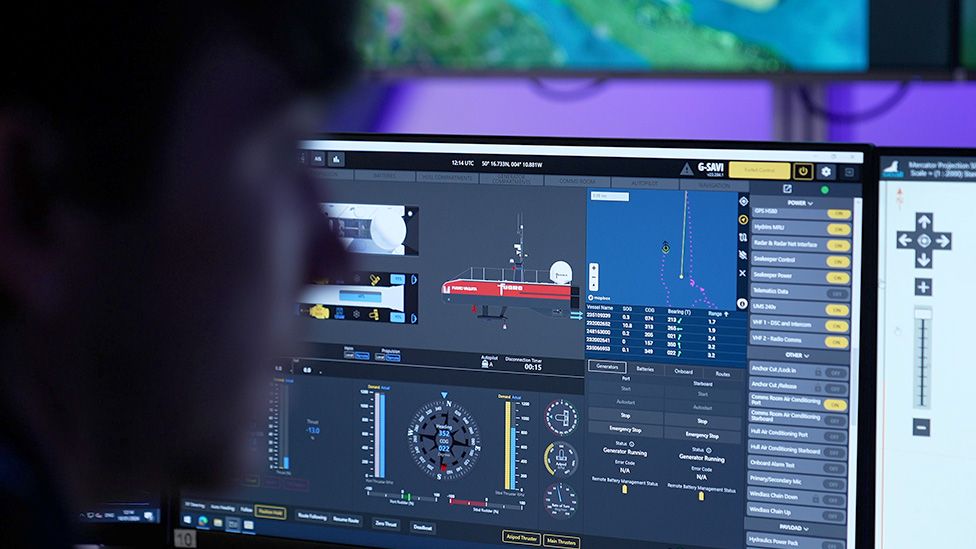
Image source, BBC/Kevin Church
Many questions spring to mind about remotely operated and autonomous shipping, just as they do about driverless cars and trains and the drones that are increasingly filling our skies.
How will these technologies change the nature of work? Can they create new and different types of jobs to replace those they eliminate? How secure are the systems being developed – can they defend against cyber-attack and piracy? More fundamentally, are they robust and reliable enough? What happens if a satellite link falls over?
“Everything we do starts from the standpoint of safety,” says Sea-Kit’s operations director Ashley Skett from his workshop where the team is putting the finishing touches to another crewless boat.
“When this vessel is at sea, there’s no-one on board to fix something if it goes wrong, so you must have an alternative system ready to step in. This vessel is built almost in two halves with two of everything on board. The clever bit is in software that enables the boat to switch seamlessly between systems.”
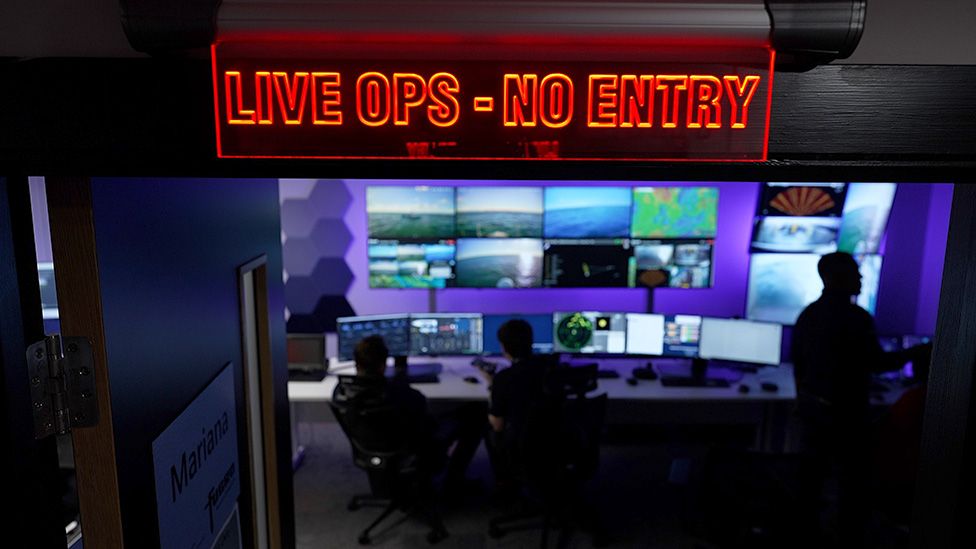
Image source, BBC/Kevin Church
The International Maritime Organisation (IMO) is currently grappling with all the issues surrounding autonomy at sea. It hopes to introduce voluntary codes defining best practice by 2028, with a view eventually to making them mandatory.
As it stands, larger ships have to have a captain – or master – with them at sea.
“We’re specifically going to be considering the role of the master and officers on board a ship in the context of a remote control centre,” says IMO director Heike Deggim.
“Would you now consider a remote-control operator to be equivalent of a master on a ship? This needs further work.”
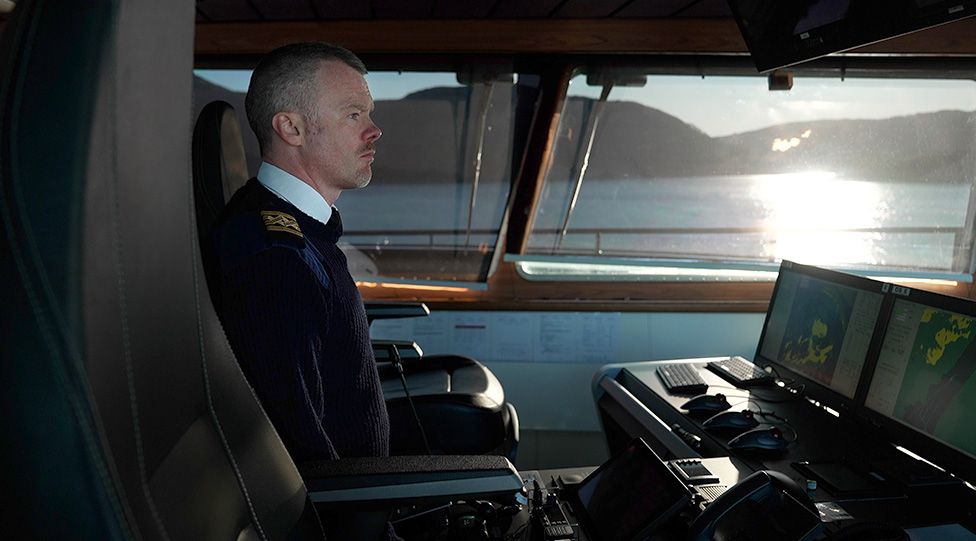
Image source, BBC/Kevin Church
The UK government has already taken a view on this topic and desires to incorporate the idea of remote masters into legislation.
“There is a huge industry coming and the government obviously doesn’t want to miss out on the opportunities. They want to see companies invest here and operate their vessels from here,” observed shipping lawyer Fiona Cain from Haynes and Boone.
Back in the Norwegian fjord, Ocean Infinity captain Simon Macaulay definitely has his eyes on the horizon.
“I could foresee a situation where you have a master mariner who’s in charge of a vessel remotely or a number of vessels remotely. Obviously that needs legislation change and part of what we’re building up here is the knowledge and safety case. We send probes and satellites to the other side of the Solar System, so this can be done.”
Additional reporting by Kevin Church